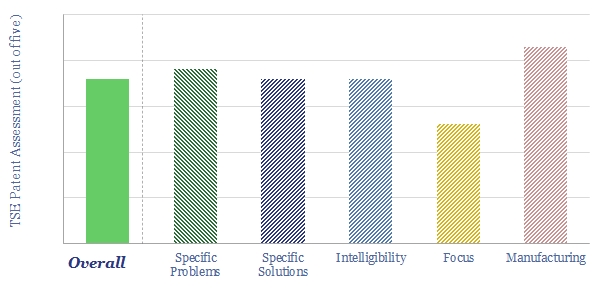NEL is a green hydrogen technology company, headquartered in Oslo, listed since 2014, and employing 575 people. It has manufactured 3,500 electrolyser units, going back to 1927, historically weighted to alkaline electrolysers, and increasingly focused on PEMs and hydrogen fuelling stations. This NEL technology review explores its patents.
NEL states that it has more than 100 active patents. And we were able to locate about 100 patents, across 28 families, in the EspaceNet database. In this NEL technology review, we have assessed NEL’s patents using our usual framework.
A large majority of NEL’s recent patents are focused on hydrogen fuelling stations, including compression, storage tanks, safety features, cooling the hydrogen stream, testing the fuelling stations and other components in the balance of plant.
While these patents are high quality, they also give some very candid details over inherent challenges for hydrogen as a transportation fuel. A hydrogen vehicle typically stores hydrogen at 700-bar, so that densities can reach 40kg/m3. By contrast air and CO2 at 700-bar reach 500 and 1,100 kg/m3. Gasoline at 1-bar is 750kg/m3 (chart below, data here).
Fuelling station innovations. Compression takes energy, repeated stop-starts are inefficient and cause wear in compressors, while compressing gases makes them hot, and hot hydrogen is explosive. There are good innovations to address these challenges.

Electrolyser innovations are also found in the patents. Two innovations stand out in particular. One is a nickel mesh, disposed between the electrodes and bipolar plates, which improves efficiency while being easier to manufacture. The other is a specialized frame for alkaline electrolysers, made from thermoplastic, which allows easier manufacturing, better electrical insulation and lower risks of leakage in pressurized cells.
Crucial issues. There is a crucial detail about these electrolyser patents that we think decision makers may wish to explore. This is covered in the data-file. Further information into green hydrogen economics and prospects can be found in our hydrogen overview.
